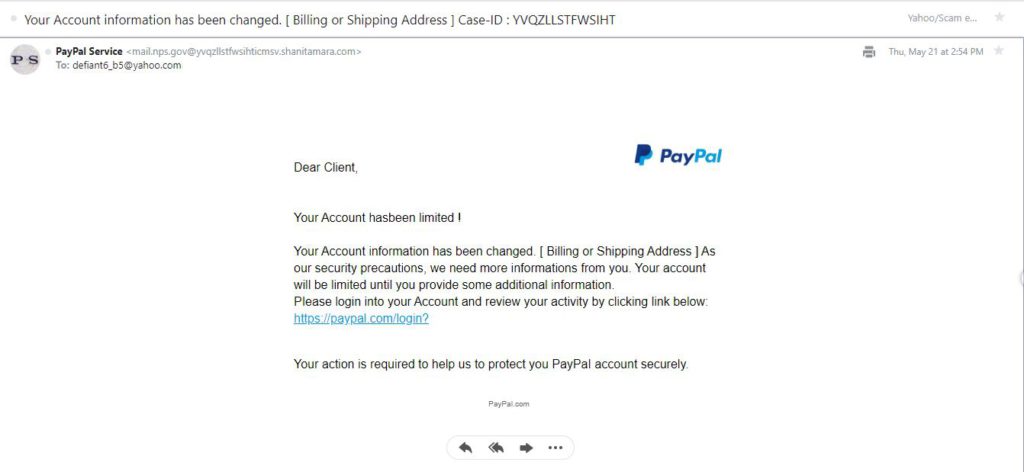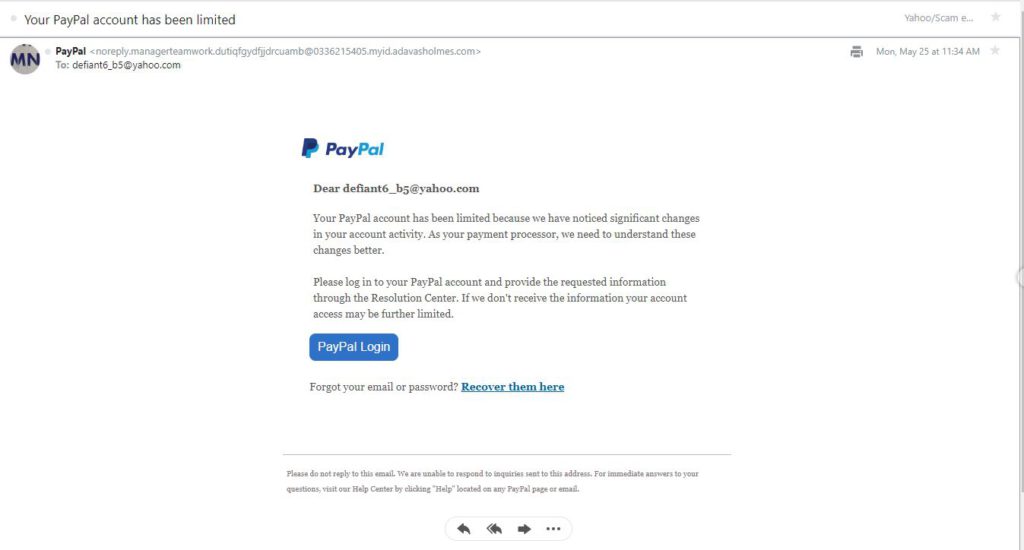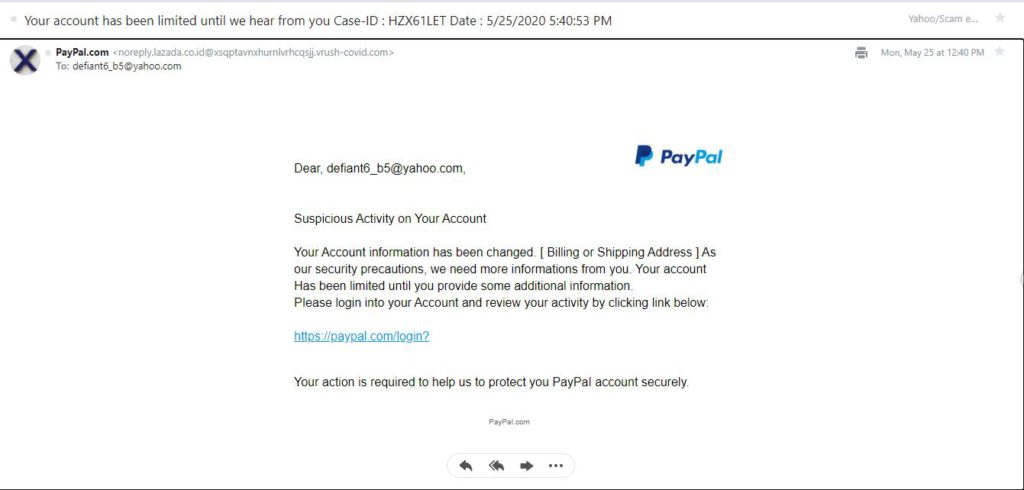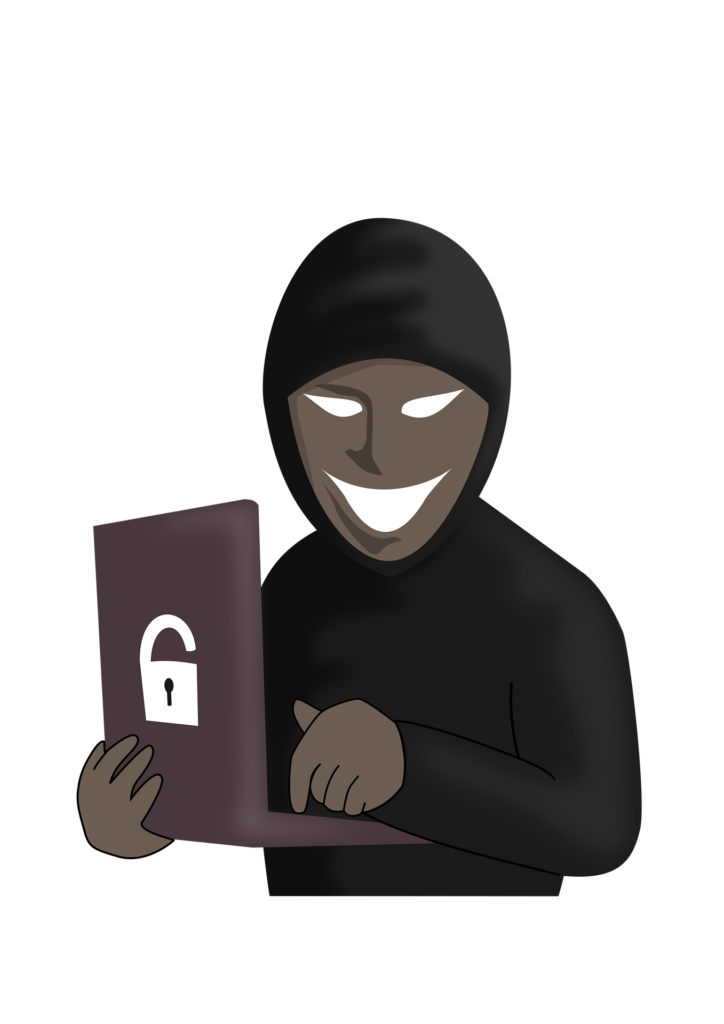What Are Two Ways To Protect Yourself From Phishing Scams?
I’ve talked a lot about Phishing Scams especially ones I receive about PayPal. You’ve been shown what those kinds of emails look like and what you can do to avoid becoming a victim of them. You might be wondering if there is a way to simplify what to look for in an email phishing scam. This might bring up the question, what are two ways to protect yourself from phishing scams?
That’s a very good question and I will share what those two ways are as well as show you three email phishing scams I’ve recently received, all claiming that they are from PayPal. I’ve been receiving quite a few phishing scams in my email inbox lately with an overwhelming majority of them claiming to be from PayPal and not so much from Amazon, Netflix, or Apple. Let’s take a look now at the emails I’ve received as well as what those two ways of protecting yourself are so that you never become a victim.
Two Ways To Protect Yourself From Phishing Scams
Believe it or not, I’ve talked quite a bit of what those two ways are. If you’ve read my past articles, such as this one, you’ll know what I’m talking about. Any guesses? Well here they are! The first and also the best way, is to ALWAYS check the email address that the email actually came from.
A legitimate email from an actual company will always have the name of the company in its actual email address. Any email that claims its from whatever company, but does not contain its name in the email address is generally a scam especially if its a long email address, which I’ve given examples of.
That will always be your first line of defense as well as the best because anything else after that will be either icing on the cake, or the scammers have gotten sophisticated enough that you’re unsure if the email itself is truly a scam or not. That’s why you’ll always want to check the email address first before anything else.
The second way to protect yourself from phishing scams is to look at what the email itself says. In a lot of cases, phishing emails will have grammatical and spelling errors which should raise a red flag. Some of the PayPal Phishing emails I’ve received in the past said something along the lines of “temporary limited” which in the overall sentence, didn’t make sense. “Because of these actions, we’ve given your account a temporary limited”. What the heck is a temporary limited?! When things don’t make sense, that should let you know that something is not right.

I’ve received 3 phishing emails within the last 3 weeks, all claiming to be from PayPal. 2 of them I received in the same day. I want to take a closer look at these to give you an example of what to look for.
Phishing Email 1
Before I go into the body of the email, I want to show you what the email address that it came from, looks like.
<mail.nps.gov@yvqzllstfwsihticmsv.shanitamara.com>
As you can see, it doesn’t have anything remotely looking like it actually came from PayPal. It’s a long email address with what seems to be random letters and then I have no idea what shanitamara.com is. Like I said earlier, this is the first thing you want to check if you suspect an email is fraudulent.
Now let’s take a look at the email body itself. You will notice the second thing I’ve mentioned to look out for so that you can protect yourself from these scams.
“Dear Client,
Your Account hasbeen limited !
Your Account information has been changed. [ Billing or Shipping Address ] As our security precautions, we need more informations from you. Your account will be limited until you provide some additional information.
Please login into your Account and review your activity by clicking link below:
https://paypal.com/login?
Your action is required to help us to protect you PayPaI account securely.“
Look at the grammatical and spelling errors in this email. “Your Account hasbeen limited !”. The second line is already littered with mistakes. Why capitalize account if its not at the beginning of the sentence? Then you’ll notice that has and been are all one word and not separated. Next up you’ll see the use an exclamation point, but they put a space in between it and the sentence.
Going further into the email, you’ll notice that they capitalize Account yet again and then they begin the next sentence with brackets and have Billing or Shipping Address inside the brackets. There’s no explanation as to what this is for and then they capitalize As and go on further to say they need more informations from you which is yet is another spelling error.
In the line above the link, they once again capitalize Account and then they want you to click the link below to supposedly review your account activity. While the link may look genuine, I guarantee you its not. It may look like an authentic PayPal link because of the name PayPal in it as well as login at the end of the url, but I guarantee you that its phishing site designed to look similar to PayPal’s website, but will instead steal your log in information or your identity.
That’s why its imperative that you never click on a link from an email you’re not entirely sure about. You don’t want to give these scammers exactly what they’re looking for. Now let’s take a look at the second phishing email that I received.
Phishing Email 2
“Dear defiant6_b5@yahoo.com
Your PayPal account has been limited because we have noticed significant changes in your account activity.As your payment processor, we need to understand these changes better.
Please log in to your PayPal account and provide the requested information through the Resolution Center. If we don’t receive the information your account may be further limited.“
Now there aren’t as many spelling and grammatical errors in this particular email when compared to the one above, however, there are some that can be spotted.

There isn’t a space from the end of the first sentence and the beginning of the next one. There’s also one other thing that I wanted to point out. Notice how the email starts: “Dear defiant6_b5@yahoo.com“. Um, if I have a legitimate account with PayPal, wouldn’t they actually address me by my first name and NOT my email address?
Let’s take a closer look at the email address it came from:
<noreply.managerteamwork.dutiqfgydfjjdrcuamb@0336215405.myid.adavasholmes.com>
Just like the first email I showed above, this email address does not have PayPal in it at all and it just some long, almost seemingly random email address. PayPal would NEVER send an email from an address like this and it would be pretty short if this were a legitimate email from them.
It’s time to take a look at the final phishing email that I received and see how similar it is to the ones that I had just shown. Once again, the two things to protect yourself from these type of emails, apply here.
Phishing Email 3
“Dear, defiant6_b5@yahoo.com,
Suspicious Activity on Your Account
Your Account information has been changed. [ Billing or Shipping Address ] As our security precautions, we need more informations from you. Your account Has been limited until you provide some additional information.
Please login into your Account and review your activity by clicking link below:
https://paypal.com/login?
Your action is required to help us to protect you PayPaI account securely.”
As you can see, they once again addressed my by my email address and not my first name. Next, you can see some spelling and grammatical errors which are very similar to the first email that I had shown.

There’s no reason to capitalize Account, Billing or Shipping Address is once again in brackets and we don’t know why, informations is misspelled and makes no sense because of the spelling error, and they capitalized Account towards the end. Oh yes, I don’t want to forget the email address that this beauty came from:
<noreply.lazada.co.id@xsqptavnxhurnlvrhcqsjj.vrush-covid.com>
What I find really interesting about this particular email address is that not only is PayPal not in it, the email address has covid in it which is really unusual considering what’s going on in the world at the moment. This is definitely not a legitimate email from PayPal.
Final Thoughts
You no longer have to ask what are the two ways to protect yourself from phishing scams because I gave you great examples of the type of phishing emails that I and other people tend to get and the two biggest red flags that will protect you from phishing scams.
The email address these scams come from will always be your number one way to protect yourself from being a victim of this type of scam. I always look at that first before anything else and that will always tip me off of whether an email is legitimate or not. A true email from PayPal or any other company will usually have the name of the company in the email address.
The second way to protect yourself is to always check for spelling and grammatical errors like I was able to show in those emails above. Most phishing emails will have some of these type of errors which should give you a red flag. Now I will say that some scammers these days are getting better with spelling and other common grammatical errors and so at times its getting harder to find any in a phishing email. That’s why it’s important to check the email address it is sent from before anything else.
Have you ever been a victim of email phishing scams? Are there any other things that raise red flags for you when it comes to phishing emails? Feel free to post your comments below.


June 3, 2020 @ 6:30 pm
Hi Brian,
Thanks for this informative post. I hate how these scammers capitalise on people’s naivety and the fact that they are used to just responding to emails and putting their personal information into boxes. It is good that you are raising awareness of how these scammers lure people in and how to avoid them.
June 4, 2020 @ 1:13 am
I’m glad you found it informative and that this can help you out. It’s scary how hard these scammers try to lure people in. Why can’t they put that much effort into a legitimate job like most
June 3, 2020 @ 6:31 pm
Hi, great article about an ever-increasing challenge while being online. I have received these kinds of phishing attempts myself several times. I have always been suspicious about email messages which seem to come from Paypal (as in your example). I have checked both the email address and the body of the email itself for irregularities and managed to detect the attempt.
I also keep in mind when my last activities on Paypal as an additional check. If the email is outside the timeframe transactions normally gets done, the red light starts flashing.
June 4, 2020 @ 1:15 am
Glad to hear that you already use both methods. I like also that you check the last activity on your PayPal account just to make sure everything is
June 3, 2020 @ 6:33 pm
quiet an informative article you have here of two ways to protect yourself from phishing scams.there is indeed a rapid increase in the current rate of online scam it becomes necessary that all before you sign up into any platform you should carry out a thorough review of them it goes a long way to protecting you against such scam..
June 4, 2020 @ 1:19 am
Glad you found the article informative. You’re right, there is a very rapid increase of online scams and it seems the rate of phishing scams has rapidly increased as well. Just this morning I received an email saying that my Apple ID had been locked. The email definitely was not from Apple.
June 3, 2020 @ 7:02 pm
I think this is a great job to bring to the forefront, because this is something that happens to people on a daily occurrence and can add stress to someone’s life. I think this article would be very helpful for the elderly because they are often targets of this type of scam. Over the years I have learned to always look at the receiving email address, that has been the biggest help, because scammers upped their game by adding a logos.
June 4, 2020 @ 1:21 am
It’s scary how the scammers have upped their game, as you have said. Adding the company’s logo to make it seem like it is really from said company is causing more people to become victims of these type of scams. I’m glad you already know to check the email address that the email itself came from/
June 4, 2020 @ 12:00 am
Hello there, thanks a lot for sharing this beautiful content here with us. I must say i really do find this review very informative and at the same time very educative as it contains useful information’s on how one can protect themselves from these phishing scams, i personally think these tips of your are really well laid out and would be of great help. Thanks for sharing this.
June 4, 2020 @ 1:32 am
Glad you found it informative. Which one of the two ways to protect yourself from phishing scams did you find the most
June 4, 2020 @ 12:08 am
so thoughtful of you to share such an informative review on how to protect yourself from phishing scams..there has been a rapid increase of scam block online and you putting up this article will go a long way to taking proactive actions from being conned by this common platform…
thanks for sharing such an informative review
June 4, 2020 @ 1:35 am
You’re right, there has been such a rapid increase of scams online that it just gets harder to protect yourself from them. I want people to know the best ways to protect yourself from phishing scams so that they never become a victim.